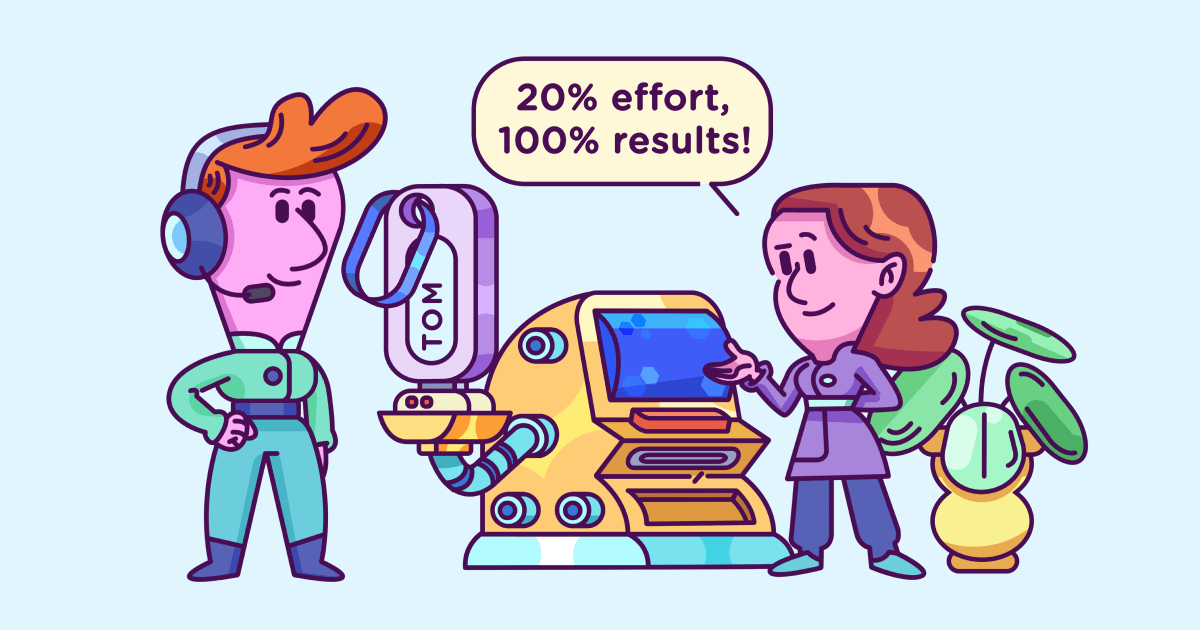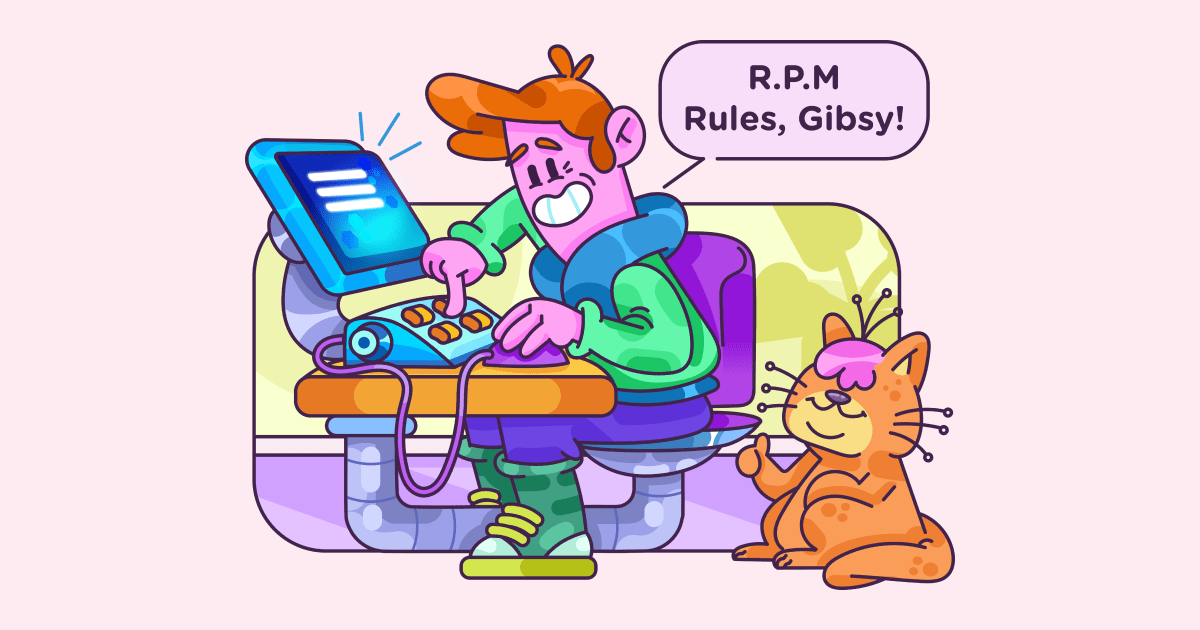How to plan your day and stay organized
Last updated on: May 23, 2023
Having trouble following through with your plans? Maybe repeating the same mistakes over and over and you’re not sure how to fix that? Or you want to start planning, but don’t know where to begin?
Well, this guide covers daily planning that focuses on keeping you consistent and motivated to achieve your goals. Throw urgency and tight deadlines out the window, and take a look at how you can become the most productive version of yourself by simply focusing on you.
We’ll discuss the art of time-crafting, why your long-term dreams are important, and how getting creative with your journaling, among other things, can bring out the best in you.
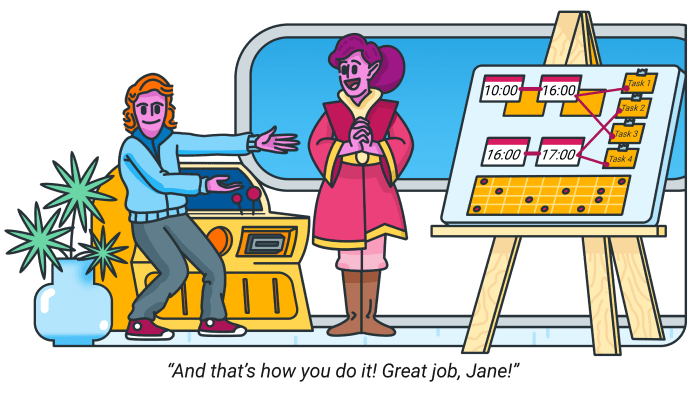
Table of Contents
Why long-term goals are necessary for daily plans
Let’s say you decide on a Sunday evening that you want to start planning your entire week. Usually, our minds will immediately go towards our favorite app, a calendar, or a notebook, and start with Monday.
WRONG. /insert buzzer sound here/
Sure, you probably know what your current project at work is, so you can break down your tasks. Or you just decided you want to lose 10 pounds. But starting from the smallest unit first – the task – will only make you spin in circles. In fact, your daily plan could fall through on the first day.
Why? Because it’s missing direction.
And that’s why you need a border, overarching goal that you wish to achieve. With that in mind, you will immediately come up with more purposeful tasks, and feasible plans.
Here is how.
Start planning by creating specific long-term goals
Most of our productivity and motivation to finish tasks comes from knowing where we are headed, and what we want to achieve.
When you set long-term goals for yourself, planning out individual days becomes a breeze. And it’s for two simple reasons:
- It’s much easier to stay motivated when goals are visible, always present in the back of your mind, and
- Planning becomes much simpler, since tasks are more straightforward.
For example, saying you want to become healthier in six months and leaving it at that, vs saying you want to become healthier by eating more vegetables.
In the former, you won’t exactly be sure how to go about planning your day:
- Start with a few raw veggies a day?
- Eliminate fast food?
- Eliminate fast food, eat a few raw veggies and cook more?
In the latter, when you specify you want more vegetables as a means of getting healthier, your planning is immediately streamlined:
- Maybe you decide to cook three times a week.
- Make a grocery list that needs to include at least four-five vegetables.
- Spend an hour looking for easy recipes to start with.
These are already more tangible, easily achievable daily tasks, which can also be expanded to weekly milestones.
Make monthly goals
Set milestones for each month, and specify a goal, or a result.
If we use the above example, you can narrow down the goal of eating more vegetables by doing this:
| Month | Goal |
| April | Make 12 vegetarian meals |
| May | Try meals with vegetables you normally don’t like |
| June | Try salad meals and find a favorite one |
The more self-contained and manageable your goals, the more likely you are to follow through. And as far as daily planning goes, you are one step closer to forming airtight plans for each day.
Make weekly plans based on monthly goals
Now, if your April monthly goal is to make 12 vegetarian meals, you’ve already set up your weekly goal for the whole period – make three vegetarian meals a week.
Immediately, you can get more creative – either have one vegetarian breakfast, lunch, and dinner each the week, or just try vegetarian breakfasts, or dinners… whichever you prefer. Make it as easy or as challenging for yourself.
Make daily plans as stepping stones to reach milestones
And when you get to make a daily plan related to your diet, it’s time to break down the weekly goal into baby steps. For example, for three meals a week, you can do:
Sunday – determine veggie meal days, find recipes and make a grocery list
Monday – do grocery shopping
Tuesday – eggs and cheese on toast for breakfast (maybe try oat milk this one time)
Wednesday – /
Thursday – veggie pizza for lunch
Friday – /
Saturday – butternut rice with leeks and spinach for dinner
Sunday – write down impressions, find new recipes, make a grocery list
The same principle can be applied to anything else – finishing a project, making a new habit, or moving forward in your career. What’s more, the method of planning from a greater goal down to the smallest steps makes daily tasks much more manageable and satisfying.
Methods of planning out your day
Daily planning is such a subjective activity that it is never just “filling out your calendar with tasks”. No two people work exactly the same, and from the way they process important information to how they expend their energy throughout the day will vary.
In this section, we’ll explore different methods you can employ to organize your tasks.
Rely on your inner planning app
You don’t want to be tied down by an organizational or productivity app. Because what happens when it goes away, or isn’t updated anymore? You’ll be stuck having to reconsider building your planning habits from the ground up.
Instead, time management strategist Mike Vardy advises getting better at using your “inner app”. That is, creating a more organized mindset that won’t rely only on digital apps for help (such as calendars, to-do lists, etc.). These tools are here to be just that – tools. However, we’ve become overly dependent on them over time.
Vardy argues that, once you handle the “inner app”, you’ll find it a breeze to cruise between apps, without risk of your daily planning falling through.
The Mike Vardy time-crafting method
At a brief talk for Prod Con in 2019, Vardy explains how he believes that time is a man-made concept. That, instead of tracking every single hour of our time, we need to look at task importance, first and foremost. Shifting to this kind of viewpoint, he argues, gives us the chance to craft our own schedules based on task importance, and less on their urgency.
Here, we’re going to take a slightly closer look at how time crafting makes daily, weekly, or monthly planning much easier.
1. Don’t hyper schedule yourself
Right out the gate, Vardy warns not to plan out every single hour of your day. It only makes things more difficult should your day get derailed. Like a family emergency, an urgent meeting, or deadlines suddenly shifting.
A tight schedule is much like a house of cards. And if a single event threatens to topple it over, it will become all the more stressful to plan the same things again, allocating resources, time and energy. Just like rebuilding a house of cards as fast as you can.
That’s where Vardy advises being less focused on strict time constraints and trying day theming.
2. The day theming method
In an article on productivityist.com, Vardy wrote about his own discovery of day theming. Day theming relies on limiting your options (and thus simplifying) your planning process. The goal is to relieve your brain of some of the stress that comes with planning, by assigning specific tasks on specific days.
Vardy would first write out his tasks, and then label them into separate categories. Then, based on those categories, he would deduce what kind of themes he would assign for each day. The themes he made were (starting from Monday):
Optimization, Video, Audio, Training, Deep Work, Family/Housework, Planning
In much the same way, for someone else, the themes might look like:
Education, Family/Chores, Writing, Communication (social media, emails, etc), Clients, Planning
It all depends on each individual’s line of work, their lifestyle, and energy levels. Some people might even leave one of their days without a theme, to have a break in the weekly workload. As we’ve mentioned, planning is a very subjective thing that requires you to construct a framework that will work for you.
3. Vertical and horizontal theming
Vertical theming is the day theming process from earlier, where certain tasks will fall on a particular day. In Vardy’s case, the schedule looked like this:
| MON | TUE | WED | THU | FRI | SAT | SUN |
|---|---|---|---|---|---|---|
| Optimization | Administrative | Audio/Video | Training | Deep work | Family/Housework | Family/Housework |
Horizontal theming are tasks that need to be repeated daily – like checking emails, meditation, important calls, etc. On a calendar or a schedule, they usually look like this, hence the name:
| Time/Day | MON | TUE | WED | THU | FRI | SAT | SUN |
|---|---|---|---|---|---|---|---|
| 6AM -7AM | Meditate | Meditate | Meditate | Meditate | Meditate | Meditate | Meditate |
| 10AM -11:30AM | Admin work | Admin work | Admin work | Admin work | Admin work | Admin work | Admin work |
| 5PM – 5:45PM | Help kids with homework | Help kids with homework | Help kids with homework | Help kids with homework | Help kids with homework | Help kids with homework | Help kids with homework |
| 6:30PM – 7:30PM | Workout | Workout | Workout | Workout | Workout | Workout | Workout |
When combined, vertical and horizontal theming make you a planning master.
Why?
Because vertical theming lets you set aside days for specific tasks important for your goals. They’re not strict deadlines, simply a framework that helps your brain focus better. And horizontal theming is a scheduling method designed for those tasks you need to do every day.
Naturally, you won’t be making a “workout day” as a theme, and only go to the gym on Tuesdays. The theme is too narrow, and works much better as a puzzle piece in the horizontal theme.
4. The 5 modes to categorize your tasks
To get a head start with categorizing your tasks into themes, Vardy made a short guide on the 5 categories of mode-based work. These modes are:
- Theme-based: tasks batched together based on similar categorization
Ex: Family Mode, Deep work, Writing, etc. - Resource-based: tasks batched based on tools you need for them or places where you finish them
Ex: Word Doc Mode - Energy-based: tasks batched together depending on the amount of energy needed
Ex: High, Medium, Low-energy mode - Activity-based: Vardy also calls them verb-based. THey’re closely connected to your long-term goals.
Ex: Errand-running, Educating, Training, etc. - Time-based: the most familiar ones – tasks batched together based on how long it takes to finish them.
Ex: 5-minute mode, 25-minute mode, etc.
A great example on how modes work with daily plans, and how they tie in with your overall goals comes from Vardy’s own presentation.

Source: themorningeffect.com
Here, the task of replying to an invoice belongs in the email mode (as he categorized it based on the tools he needs), falls into his monthly coaching project (as a larger goal), and is scheduled at the time of day when he does his emails.
While this kind of planning seems a little complex, Vardy reassures in his talk for ProdCon that it simply takes some time and small steps to quickly catch on how time crafting and mode categories work. Learning them provides a great self-sufficient tool to create a framework of your own that will barely rely on time constraints, and instead focus on what’s important to you.
Task-batching method
Another commonly used method to plan out your day is called task-batching. It’s less complex than time-crafting, but captures the same gist. So it could be a good starting point.
When batching your tasks, you simply group similar tasks together – for example, in the morning, you handle all of email correspondence. That includes invoices, feedback, setting up meetings, etc. While in the afternoon, you focus on deep work tasks, and leave any other email issues for the next day.
Batching your tasks throughout the day prevents context switching – the moment when your brain finds it harder to focus on a new task, because it’s wildly different from the one you were just doing.
For example, while setting up a meeting you were: assembling a list of people, notifying them about it and the topic, proofreading the invitation, and after 30 minutes of that, you suddenly shift to writing feedback to the designer for the new front page design.
It takes our brains 20 minutes to fully focus on a new task, if it has no similarities to what we were doing before.
So, task batching helps your mind stay in the right lane, and stay productive without exerting more effort.
The gamifying method
What apps like Habitica, LifeRPG and EpicWin do is treat daily schedules as video games. For those who can’t see themselves being bound to strict schedules and minimalist user interfaces or journals, gamified planning may be the solution.
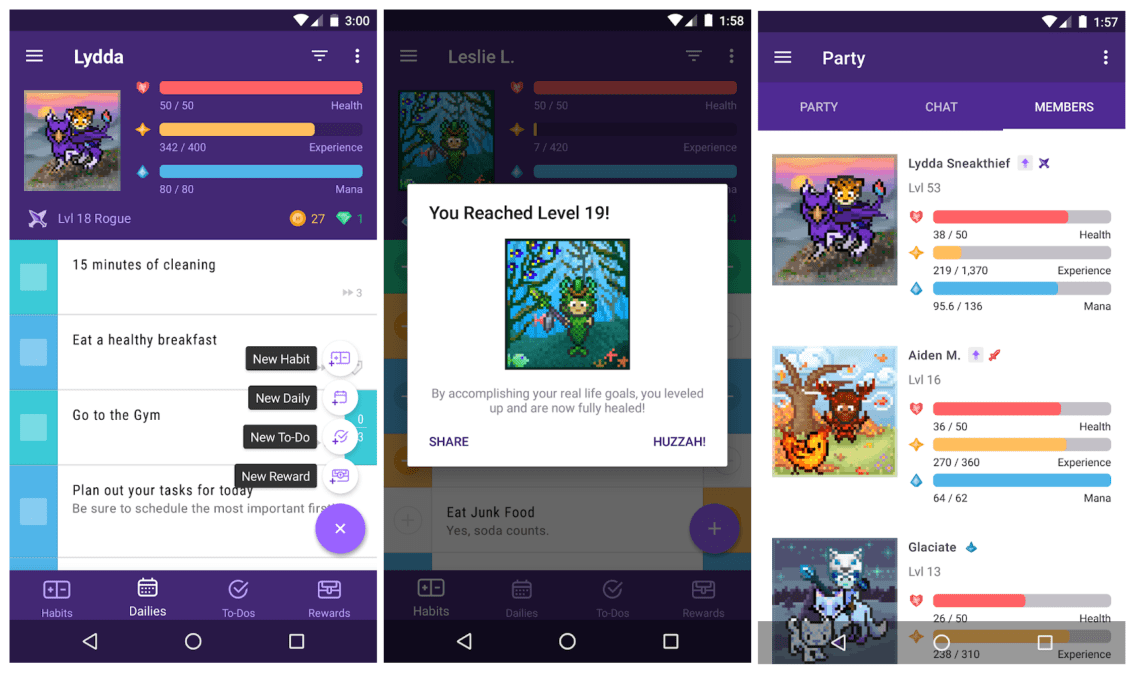
Source: androidauthority.net
The way these apps are designed is to give you the freedom of naming and labeling every task and assigning them a specific amount of experience points (EXP for short). And as you finish each one, you get that set amount of exp, boosting yourself (or your character) to become more powerful. It’s a great visual aid for those who have trouble actually seeing any progress in their tasks.
In much the same way, pen and paper enthusiasts make journals in the form of RPG books. Ryder Carroll, the creator of Bullet Journal made an excellent blog entry breaking down his method of RPG daily planning.
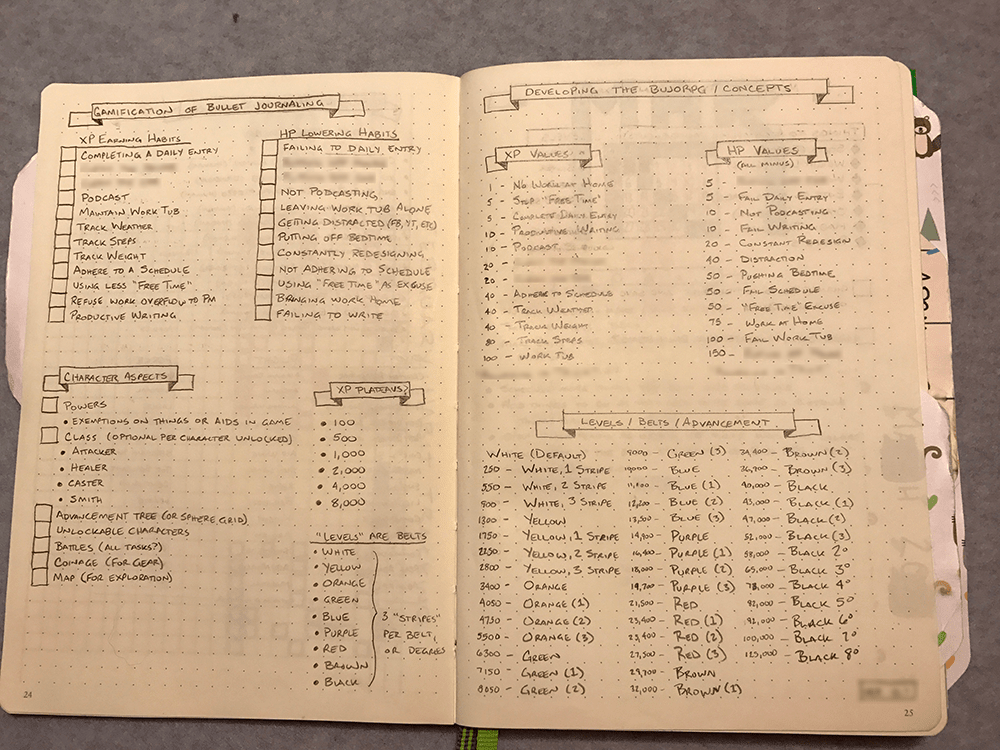
Source: bulletjournal.com
Whether you decide on a digital app, or crafting your own book of quests, the gamification of daily planning is a perfectly viable method. It makes for a more interesting journey in achieving goals, and making daily life a little more fun.
How to ensure your daily plans stay
Now that we’ve discussed the methods of daily plans, what are some ways in which you can ensure you stick to them? We’ll discuss three ways to keep your tasks manageable, so that your daily planning doesn’t go to waste.
Make tasks as small as possible
At this point, even little birds know that the smaller your tasks are, the more likely you will finish them.
Whenever you start planning out make sure the tasks don’t take you longer than an hour.
Use a task-solving method that suits you
When you want to stay on top of your tasks, there’s plenty of time management methods to choose from, based on how you tackle work. Some of the more famous ones include:
- The Eisenhower Matrix
Sorting tasks into four different categories, depending on their urgency and importance;
- Time blocking
Arrange your day into blocks of time meant for different tasks (time-dependent);
- Eat that frog
Making a to-do list based on the tasks’ importance – most important ones come first;
- Biological prime time or the (Circadian rhythm)
Making a schedule based on your energy levels throughout the day;
💡For a full list of time management methods and their advantages and disadvantages, you can go here:
Get creative with journaling
In the past few years, we’ve seen a boom in bullet journaling. Pinterest is filled with creative ideas for tracking habits, journaling thoughts, or planning out their career progress.
It’s the aesthetic approach, and an almost meditative feel to the process that draws some people to it. For some, it’s the sense of accomplishment as they fill in the checkboxes with highlighters. And as time goes by, being able to reflect on the colorful journey they’ve taken. Creative bullet journaling makes daily planning something to look forward to.
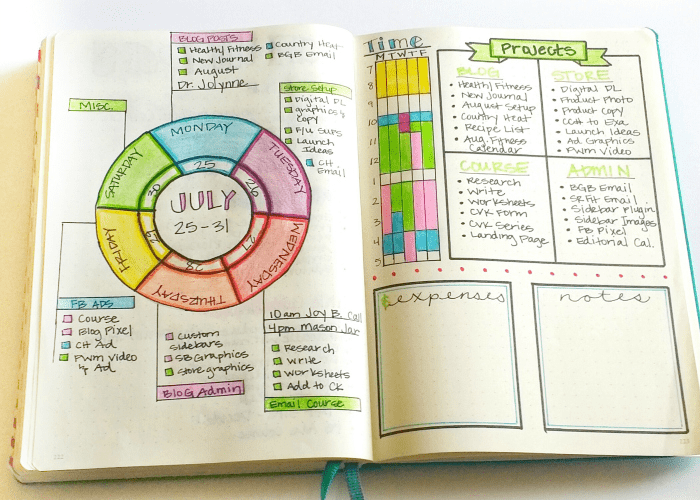
Source: fruitfullyalive.com
If you consider yourself more of a visual type, and at the same time are looking for a nice new hands-on hobby, bullet journaling could be for you. As a motivator and a permanent record of your achievements, it’s a great place to start.
Revise and try again
Last, but perhaps the most important part of daily planning, is revision. One has to make a habit of tracking their time and impressions, revising, analyzing the data, and reworking their schedule.
Because without enough self-reflection and learning from mistakes, it is more likely one would give up on planning altogether. So, how should you revise to learn the most out of it?
Track time to get accurate data
A key player in your planning and revision is the time tracker. While you don’t have to be bound by deadlines if you choose not to, the only real way to find out how much productive or wasted time you have is to track every activity.
Now, it may be a bore to consider another app to use, just to track time. But, apps like Clockify, for example were made to seamlessly integrate into every browser, major platforms and apps. You can include it in your daily planner in Google Calendar, or Todoist, and click just one button to start the timer.
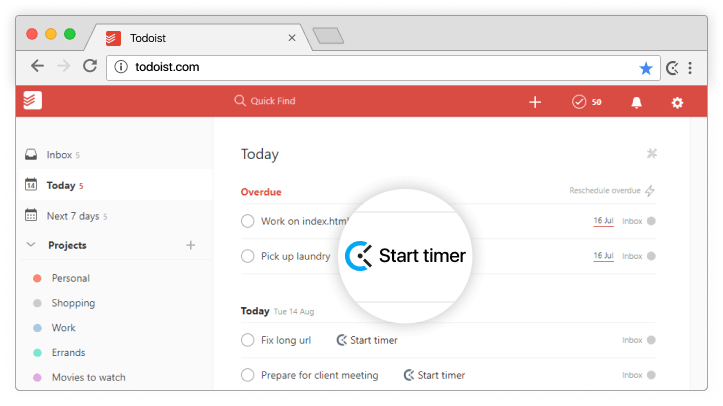
And with minimal effort, you get to have a detailed report on how your day was spent, and where the time went.
💡More resources on this topic:
Write down your impressions
Every time something happens that affects your plans either positively or negatively – write it down. A meeting suddenly popped up, and it ruined your focus? Write it down. A task took you surprisingly less than you thought it would? Write it down. A coworker’s advice gave you some food for thought? Note it down to mull it over later.
Turn it into a habit, and utilize post-it notes to recall things easier. You’d be surprised how little information we can actually remember throughout the day.
And at the end of the day, you can make a 10-minute ritual to consolidate all your daily notes for a bigger, weekly review.
Make a weekly or a bi-monthly review
Whether you make a themed day for planning, or set aside a time block for it, it’s good to keep a habit of going over all the data you’ve collected and analyzing it. You can easily spot your biggest distractions, how your energy levels fluctuate, or if the tasks themselves are not formulated well enough.
It’s remarkable what you can find out, simply by tracking your progress. Revising every once in a while, you’re sure to remind yourself of what the ultimate goals are, and how to reach them faster. Without it, you’d be more likely to repeat the same mistakes, or miss on opportunities to improve your productivity and workflow.
Conclusion
Start by setting down long-term goals, then disassemble them into monthly, weekly, and daily stepping stones to ensure your tasks are purposeful. And by eliminating the pressures of time and urgency, you can start to appreciate those tasks, and what their purpose is.
Planning out your day is more than just filling in a calendar with tasks. It is about active engagement with your long-term goals, and how you wish to improve certain aspects of your life. What’s more, if we focus on the importance of tasks, rather than fitting as many things as we can within 24 hours, planning can make our lives richer.




